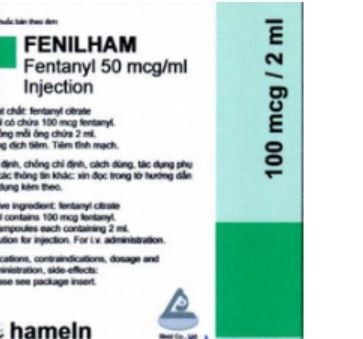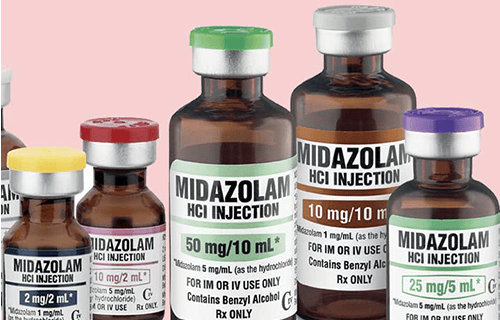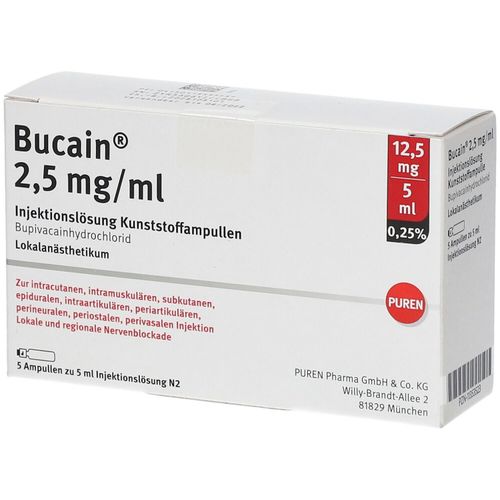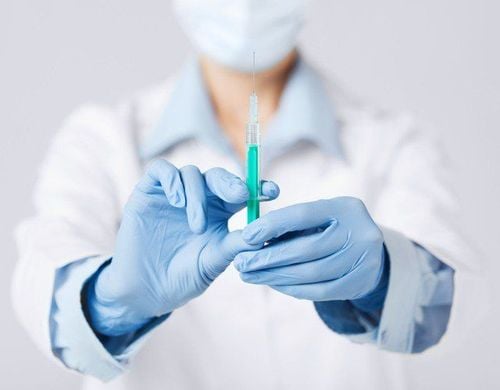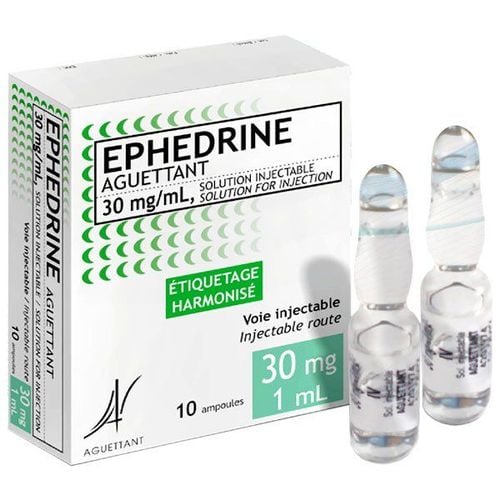This is an automatically translated article.
The article was professionally consulted with Master, Doctor Le Hong Duong - Anesthesiologist - Department of General Surgery & Anesthesia - Vinmec Hai Phong International General Hospital.Percutaneous nephrolithiasis is a method that aims to temporarily inhibit nerve conduction through the spinal cord, through the injection of local anesthetic into the subarachnoid space, to meet the requirements of anesthesia and analgesia during the procedure and Surgery to treat kidney stones.
1. What is kidney stone lithotripsy?
Kidney stones are a common disease related to the urinary system. Kidney stones are formed when excess substances accumulate inside the body that cannot be eliminated. Anyone can form kidney stones, however, people who are overweight, obese, abuse alcohol will increase the risk of kidney stones.In the early stages, kidney stone disease has no obvious symptoms that make the patient subjective. But when the disease gets worse, it will cause dangerous complications and is difficult to treat. Usually, to treat the disease, patients need to undergo surgery for urinary stones. But for large stones, surgery to remove stones will be risky, causing kidney damage. Therefore, the kidney stone lithotripsy method overcomes the above disadvantages.
With the development of medicine, the method of percutaneous kidney stone lithotripsy does not cause kidney damage, non-invasive by using electromagnetic pulse machines to break the kidney stone structure. As a result, kidney stones will be smaller or excreted from the body in the urine.
Currently, there are many lithotripsy methods such as: Laser lithotripsy, endoscopic lithotripsy, ... However, spinal anesthesia percutaneous renal lithotripsy is most commonly applied. With this method, the patient will be injected with anesthetic into the subarachnoid space, temporarily inhibiting nerve conduction through the spinal cord, to meet the requirement of anesthesia for surgery.
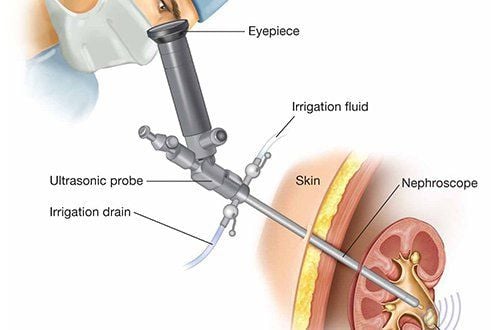
2. Indications and contraindications for performing percutaneous renal lithotripsy
Percutaneous nephrolithiasis is performed under spinal anesthesia for surgical anesthesia and surgical analgesia. In some cases, this method will not be indicated, such as:Patient and patient's family refuse to be treated with this method Patient is allergic to local anesthetic contraindication to spinal anesthesia Coagulation disorder Severe Insufficient anticoagulation period of time. Mitral stenosis constricted, aortic valve constriction Inflammation of the anesthetic needle puncture site
3. Method of spinal anesthesia to dissolve kidney stones through the skin
Step 1: PreparationOn the side of the hospital: To perform percutaneous lithotripsy spinal anesthesia, the surgical team needs a doctor and nurse specialized in anesthesiology and resuscitation. At the same time, the means and tools need to be fully prepared. Specifically:
Resuscitation facilities: oxygen source, Ambu balloon, mask, intubation equipment, anesthesia machine with breathing, electric shock machine, suction machine... ephedrine, adrenaline... Anticonvulsants: barbituric family, benzodiazepines, muscle relaxants, intralipid 10-20%... Routine monitoring means: electrocardiogram, blood pressure, oxygen saturation, breathing rate... Pump needles of all sizes, gloves, sterile gauze, pince, antiseptic alcohol, sterile gauze, needles for spinal anesthesia of all sizes... Local anesthetics: bupivacaine, levobupivacaine, ropivacaine... can be combined with drugs morphine family (morphine from 100-300 mcg; fentanyl 25-50 mcg, sulfentanil 2.5-5 mcg...). Dosage is based on weight, height and body condition of the patient: bupivacaine dose from 3-12mg; levobupivacaine from 5-12mg; ropivacaine dose from 5-20mg; Reduce dose for people > 60 years old, anemia, pregnancy. On the side of the patient: Before surgery, the patient should be examined and explained to the patient to cooperate with anesthesia. Patients are instructed to clean the anesthetic area to avoid infection. In case, the patient is agitated, the doctor may prescribe a sedative from the day before surgery.
At the same time, the patient's medical record according to the regulations of the Ministry of Health
Step 2: Conduct
The patient will have an ultrasound of the spine in a sitting or lying position to guide the needle puncture technique. spinal anesthesia. The person performing the operation should wear a hat, mask, wash hands, wear a shirt, and wear sterile gloves. First, disinfect the needle puncture area 3 times. The patient will receive spinal anesthesia in a sitting or lying position. If in the lying position, have the patient lie on their side with their back bent, knees pressed against the abdomen, chin pressed to the chest. If in a sitting position, the patient sits with his back arched, head bowed, chin resting on his chest, legs stretched out on the operating table or feet on the chair. Prophylaxis of hypotension: Insert an intravenous line into the patient for effective prevention of hypotension and give fluids from 5-10 ml/kg (for adults). The technique of spinal anesthesia can be performed midline (intervertebral puncture, L2-L3, L3-L4) or lateral (1-2cm midline puncture, needle in midline). , up, forward) Aim the bevel of the anesthetic needle parallel to the patient's spine and insert the needle until a sensation of loss of resistance is achieved as the needle passes through the dura. Finally, to check for CSF effusion, turn the bevel of the needle toward the patient's head and inject the anesthetic. Step 3: Monitor
Vital signs: consciousness, heart rate, electrocardiogram, arterial blood pressure, capillary oxygen saturation. Degree of sensory and motor blockade Undesirable effects of spinal anesthesia. Criteria for transferring patients from the recovery room: no hemodynamic and respiratory disorders; full recovery of movement, sensory block below T12 (below the inguinal fold).
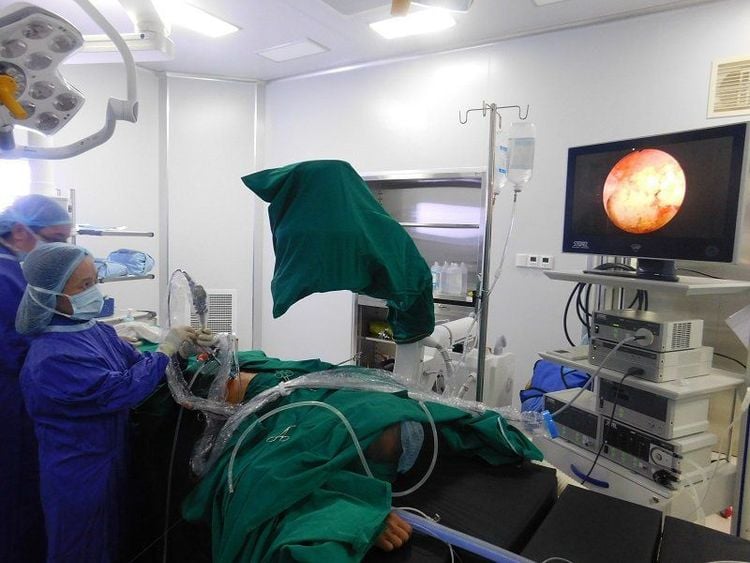
4. Complications can be encountered during spinal anesthesia percutaneous renal lithotripsy and how to manage.
Like any treatment in medicine, patients with spinal anesthesia for percutaneous kidney stones may experience some unwanted side effects. Here are some ways to deal with the complications that the patient may experience:When the patient is allergic, anaphylactic to local anesthetics, the anesthetic should be stopped; use anti-anaphylaxis regimen according to the Ministry of Health. It is necessary to stop using local anesthetics, anticonvulsants, respiratory and circulatory resuscitation, intralipid infusion when poisoning with local anesthetics bupivacaine and ropivacaine when the patient has signs Signs of anesthetic toxicity Lower blood pressure, slow pulse should be treated with vasopressors and fluid replacement. Headache: lying motionless, giving enough fluids, using pain relievers, patching the dura with autologous blood (Blood Patch). Use antiemetics when the patient feels nauseous and vomiting, and always control blood pressure Urinary retention: warm compresses, bladder catheterization if necessary. General spinal anesthesia: emergency respiratory and circulatory resuscitation. Other complications: periapical hematoma, spinal cord injury, cauda equina syndrome, meningoencephalitis. Further consultation and investigation is required to identify the lesion. In case spinal anesthesia is not satisfactory, it is necessary to switch to another method of anesthesia. Vinmec International General Hospital is a high-quality medical facility in Vietnam with a team of highly qualified medical professionals, well-trained, domestic and foreign, and experienced.
A system of modern and advanced medical equipment, possessing many of the best machines in the world, helping to detect many difficult and dangerous diseases in a short time, supporting the diagnosis and treatment of doctors the most effective. The hospital space is designed according to 5-star hotel standards, giving patients comfort, friendliness and peace of mind.
Please dial HOTLINE for more information or register for an appointment HERE. Download MyVinmec app to make appointments faster and to manage your bookings easily.





